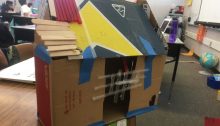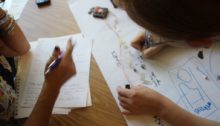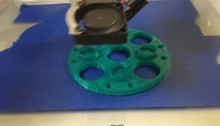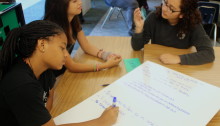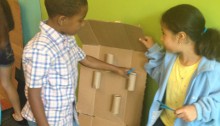Cardboard Boxes Turned into Boxes
“Aren’t we just cutting up boxes so students can build them back into boxes?” I was working with a 3rd grade teacher on a lesson for the NGSS performance expectation: 3-ESS3-1. Make a claim about the merit of a design solution that reduces the impacts of a weather-related hazard. Students were building models of weather-resistant…
